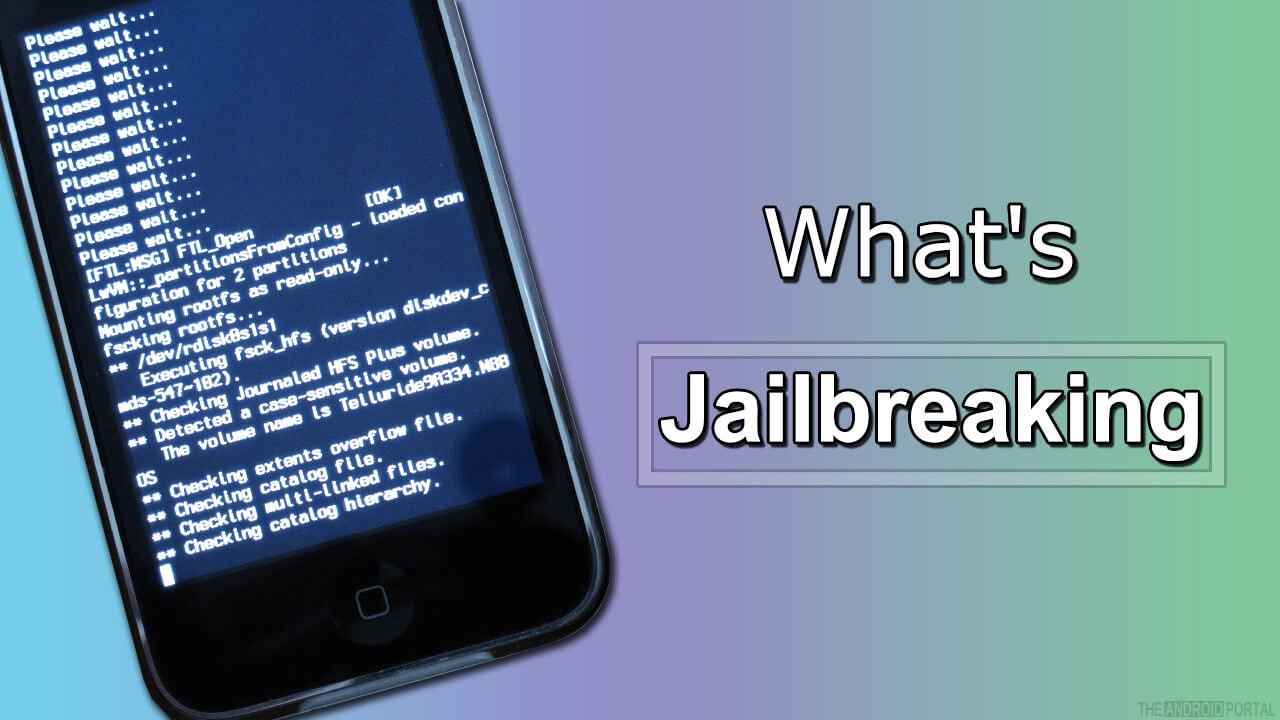Have no idea what’s the difference between jailbreaking, rooting, and unlocking a smartphone? Well, we know that most smartphone users are not familiar with it. Therefore, here we will help you know these basic concepts so that you understand the difference easily and also choose one of these that you want to perform on your smartphone.
We are living in a new tech generation wherein everyone is an expert and what to enhance the performance and functionalities of their gadgets and smartphones. Jailbreaking, rooting, and unlocking are the three common and popular approaches among techy individuals. However, still, they just know what jailbreaking, rooting, and unlocking can do, but they don’t understand why these are different and the core meaning. So, here is everything explained for everyone interested in going a bit deep.

So, let’s start by knowing all the basic and advanced facts about jailbreaking, rooting, and unlocking. It will help you get the best idea and make a better decision on whether you should opt for these approaches for your device or not.
Comparing PC OS With Smartphone OS

In comparison with PCs, smartphones and tablets come with certain restrictions. No matter whether you use an iPhone or an Android, the limitation is a part of the system that every user has to accept. And that’s where jailbreaking, rooting, and unlocking come into the picture to rescue smartphone users. These are nothing but special techniques that help smartphone users bypass the limitations defined by the manufacturer of the device.
Furthermore, some countries have strict laws to prevent users from doing these things. However, we are not going to get into the exploration of the laws at all. Our primary motive is to help you understand the difference between jailbreaking, rooting, and unlocking a smartphone. So, let’s proceed with that and explore these three one by one.
Jailbreaking vs. rooting vs. unlocking A Smartphone
What’s Jailbreaking?

Jailbreaking is nothing but a special technique that works to remove all the restrictions and limitations applied to a smartphone by its manufacturer. It is performed usually on Apple devices, like an iPhone or an iPad. By removing the restrictions, jailbreaking helps Apple users install and use third-party apps from outside Apple store sources.
Furthermore, many people consider Jailbreaking a piracy approach. Well, that’s not the case always, and the Jailbreaking approach is mostly used for performing things like changing the default browsers and mail clients on Apple devices. In other words, jailbreaking is all about having an Apple device that Apple itself doesn’t allow or approve for the users.
Jailbreaking is also meant to be performed on a device that comes with similar limitations. For instance, these days, Microsoft RT jailbreak is on Trend that allows users to install and use unapproved pc apps and programs. Furthermore, by default settings and limitations, WinRT System allow users to run only desktop apps which made by Microsoft itself.
However, there is a condition, and that’s the app must be compiled for ARM. So, you won’t be able to run any Windows desktop program that you already have. However, open-source apps are open to tweaking and can be recompiled for the Win Desktop on ARM.
Giant companies, like Apple and Microsoft, don’t want their users to perform jailbreaks to bypass device limitations. So, you can’t change any default program in iOS or run third-party apps on Windows RT. Also, to perform the jailbreak on your device, you need to find a security vulnerability that can help you in exploiting the device to reach around the company safeguards.
On the other hand, Android allows users to install and use apps available outside the Play Store and doesn’t require any Jailbreaking.
Rooting In Android

First of all, please note that rooting is nothing but a method to get root access. Rooting is meant mainly for Android devices. However, one can also perform rooting on Linux-based devices like Nokia’s old Symbian operating system.
Furthermore, on UNIX and Linux systems, being the root user is similar to being an administrator user on the Windows system. Right after rooting, you can grant root access permissions to the apps to allow them to do anything they want to do with the operating system.
For example, an app with root access permission can uninstall system apps, install low-level binaries, revive installed app permissions on Android, and do several other level things. In other words, you can do almost anything you want on the Linux system; root access gives you the ability to do the same on your Android phone.
Furthermore, an important thing to note here is rooting will take you around the security architecture of Android and that can potentially lead to problems. So, it’s always advised to proceed only if you understand things.
On some supported devices, rooting can be done only via a security exploit. Very similar to Jailbreaking, no manufacturer ever want the user to get root access. However, on certain phones, like Nexus, you don’t need any security vulnerabilities to get root access.
What Is Bootloader Unlocking?

As said earlier, Android is an open-source operating system that allows every user to get the source code and create their version of it. That’s the reason why custom ROMs like CyanogenMod exist and are the favorite of many Android users.
However, please note that not all phone comes with an unlocked bootloader and there are those that come with the locked bootloader. A phone with a locked bootloader means the device won’t boot any other version than the version approved manufacturer itself. So, unlocking the bootloader is the only way to install or flash custom ROM to your Android device, that’s an alternate version of the same operating system with advancement.
A popular ROM, CyanogenMod is the best among all, bringing the latest Android versions to the phone that manufacturers no longer update. It is known for offering a more vanilla Android experience to the user.
Furthermore, unlocking a bootloader can theoretically permit you to install other non-android operating systems too. For example, you’re free to install Ubuntu on your phone, or Windows OS on any Galaxy or Nexus phone when you have an unlocked bootloader on your phone. Plus, you can also install the Ubuntu desktop version on your Nexus 7 or above phones.
However, please note that it is necessary that whatever OS you’re going to install should be compatible with your device. Also, these operations systems are not stable and can be used for development testing purposes while working on them.
What’s Is Unlocking A Phone?

The phone, subsidized with a contract, is locked to a particular carrier. The phone’s program or software is designed to work only with the one target carrier network you’re in a contract with.
Furthermore, if you will insert any other carrier sim in that phone, you will see a message. The message says your phone is locked, and you can’t use any other carrier network to use the service.
Therefore, unlocking a smartphone or cell phone simply means tweaking it to use it with other sim carriers, either to use the different carrier on trips or to switch from one to another service provider.
To unlock the phone, you need an unlock code to remove the lock or restrictions the network service provider applies to your phone. Most Carrier unlocks the contact phone when the contract ends, while there is no lock on the phone without any carrier contract. Also, there are ways to unlock phones without letting the carrier or its permission.
The Overall Difference Between Jailbreaking, Rooting And Unlocking
In the end, it’s all about doing the same thing on different platforms with different approaches. All these three, which are jailbreaking, rooting, and unlocking exist to help you remove the manufacturer’s restrictions easily to use your phone at its best.
However, the methods apply to different devices, like jailbreaking and rooting, which generally target iOS and Android in general. Moreover, the purpose of all these approaches is the same, and that’s to skip and bypass the core restrictions and limitations.
So, that’s what creates a difference between jailbreaking, rooting, and unlocking.
Furthermore, we don’t recommend any of you at all to jailbreak or root your phone. Rooting and jailbreaking your phone is completely your decision. In fact, we suggest you stick to and use the original version of the OS flashed on your phone. And, don’t prefer jailbreaking, rooting it. It will help you not get into the complexities and use the device simply with limited but legal and secure features.
Summary
So, that’s all about the differences between jailbreaking, rooting, and unlocking a phone or operating system. Also, we hope by now you know what they are, why they are, and related facts too. Moreover, let us know whether you’re going to jailbreak, root, and unlock your phone anytime soon or not. If yes, we will create a guide for you to help you.
So, that’s all for now, and thanks for reading this post here at TheAndroidPortal.com.











